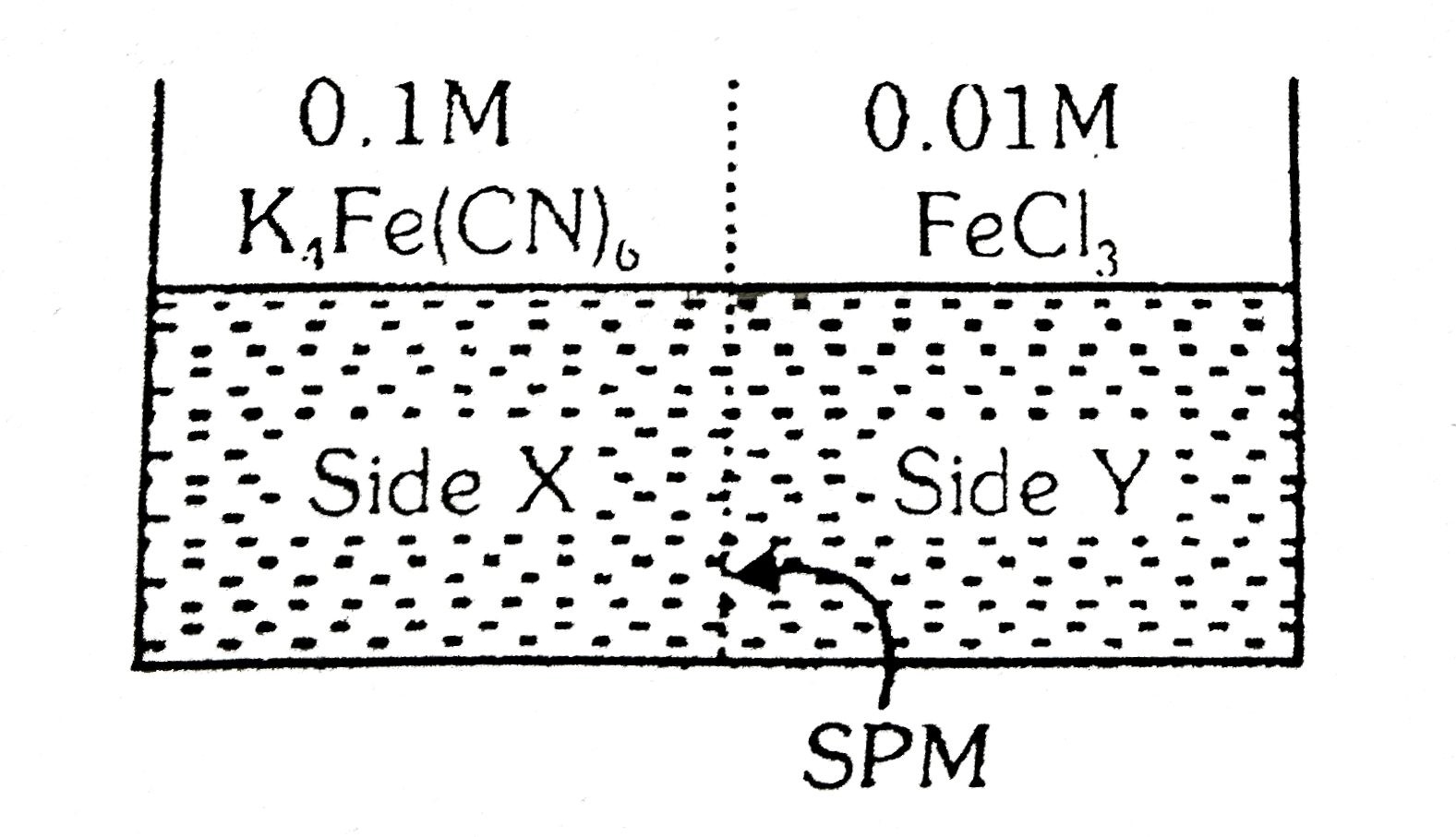X3Y2(i=5) when reacted with A2B3(i=5 in aqueous solution gives brown colour. These are separated by a semipermeable membrane AB as shown. Due to oxmosis there is :

brown colour formation in side X
brown colour formation in side Y
formation in both of the sides X and Y
no brown colour formation
The correct Answer is:d
Step by step video, text & image solution for X_(3)Y_(2)(i=5) when reacted with A_(2)B_(3)(i=5 in aqueous solution gives brown colour. These are separated by a semipermeable membrane AB as shown. Due to oxmosis there is : by Chemistry experts to help you in doubts & scoring excellent marks in Class 11 exams.
Updated on:21/07/2023Topper's Solved these Questions
- DILUTE SOLUTIONBOOK - NARENDRA AWASTHICHAPTER - DILUTE SOLUTIONEXERCISE - Level 1 (Q.62 To Q.91)
1 Videos
- DILUTE SOLUTIONBOOK - NARENDRA AWASTHICHAPTER - DILUTE SOLUTIONEXERCISE - Level 2
3 Videos
- CHEMICAL EQUILIBRIUMBOOK - NARENDRA AWASTHICHAPTER - CHEMICAL EQUILIBRIUMEXERCISE - Level 2
1 Videos
- ELECTROCHEMISTRYBOOK - NARENDRA AWASTHICHAPTER - ELECTROCHEMISTRYEXERCISE - Level 3 - Subjective Problems
1 Videos
Similar Questions
F3CI3 on reaction with K4[Fe(CN)6] in aqueous solution gives blue colour. These are separeted by a semipermeable membrene. Will tere be the appearance of a blue colour on the side X due to osmosis ?
View SolutionA2+2B2→A2B4
32A2+2B2→A3B4
Two substance A2&B2 react in the above manner when A2 is limited it gives A2B4 in excess gives A3B4.A2B4 can be converted to A3B4 when reacted with A2. Using this information calculate the composition of the final mixture when the mentioned amount of A%B are taken :c
(a)4 mole A2&4mole B2
(b)12 moles A2&2 moles B2
(c)1.25 moles A2&2 moles B2
View Solution
Knowledge Check
FeCI3 on reaction with K4[Fe(CN)6] in aqueous solution gives blue colour.

These are separated by a semipermeable membrane AB as shown. Due to osmosis there is:Ablue colour formation in side XBblue colour formation in side YCblue colour formation in both of the sides X and YDno blue colour formation.FeCl3 on reaction with K4[Fe(CN)6] in aqueous solution gives blue colour. These are separated by a semi-permeable membrane AB as shown. Due to osmosis, there is
 ABlue colour formation in side X.BBlue colour formation in side Y.CBlue colour formation in both of side X and Y.DNo blue colour formation.
ABlue colour formation in side X.BBlue colour formation in side Y.CBlue colour formation in both of side X and Y.DNo blue colour formation.When phenol is allowed to react with Br2 in (i) CS2 solution and (ii) in aqueous solution, the resulting compounds are
A(i) 2,4,6−tribromophenol and
(ii) o−and p-bromophenolB(i) m−bromomphenol and
(ii) 2,3,4−tribromophenolC(i) o−and p-bromophenol and
(ii) 2,4,6−tribromophenolD(i) o-and m−bromophenol and
(ii) 2,3,4−tribromophenol
When a copper wire is placed I a solution of AgNO3, the solution acquires blue colour. This due to the formation of .
View SolutionConcentrated HNO3 reacts with I2 to give :
View SolutionTwo solution (A) containing FeCl3(aq.) and separated by semipermeable membrane sa shown below. If FeCl3 solution on reaction with K4[Fe(CN)6] in aqueous solution gives blue colour of Fe4[Fe(CN)6], the blue colour will be noticed in:

View SolutionColour of I2 solution is discharged , when solution of 'X' is added . 'X' is
View SolutionC2H5I and C3H7I react with sodium metal and dry ether to give
View Solution
